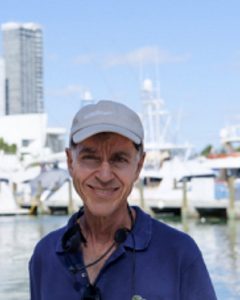|
Getting your Trinity Audio player ready...
|

Miami, the settlement that had mushroomed like magic in the period immediately before and after the arrival of Henry M. Flagler’s Florida East Railway in April 1896, was on an accelerated path to incorporation after the Flagler interests called for an informal meeting to prepare for that event. Held on the evening of June 17, the meeting was chaired by Frederick S. Morse, a realtor. About 100 persons, forty of whom were registered voters, were in attendance. Three hundred or more registered voters would be necessary to incorporate as a city, which was the level of municipal status the Flagler organization desired for the emerging community.
The procedure at the June 17 meeting called for twenty-five voters desirous of incorporation to propose boundaries for the municipality and publish a notice to all eligible voters. This notice, which would appear in the Miami Metropolis, had to contain a declaration of a desire to incorporate, the proposed boundaries of the new municipality, and the date and time that another public meeting would be held at which all voters living within the boundaries could vote for or against incorporation.
The June 17 meeting proceeded smoothly, excepting the question of whether to include North Miami, a honky-tonk area of saloons, bordellos, and gambling dens (with all three often under one roof) in the area north of today’s downtown. After it became known that neither Flagler nor Tuttle wanted North Miami included within the new city’s limits, the proposed boundaries were settled with that sector excluded. Employing today’s street numbering system, these boundaries included: on the north, a point just above Eleventh Street; on the west and south, Northwest Seventh Avenue (north of the Miami River), Northwest and Southwest Eighth Avenue and Southwest Eleventh Street, proceeding east along Eleventh Street to the intersection of Fifteenth Road and following that road southeast to a point in the middle of Biscayne Bay; on the east, about two miles into Biscayne Bay.
The final order of business was to set the date of the meeting, which was scheduled for July 28, 1896. Legal notice of the impending meeting appeared in the Miami Metropolis weekly for five weeks. This communication explained the purpose of the meeting: “To select officers and organize a municipal government.” It outlined the proposed boundaries and set the location to a room over “the Lobby,” a building situated on the east side of Avenue D, today’s South Miami Avenue, near the north bank of the Miami River. The notice was signed by the requisite minimum of twenty-five voters.
The incorporation meeting took place on the scheduled date, a hot, sultry Tuesday afternoon, under the direction of Joseph A. McDonald, one of Flagler’s top lieutenants, and a prominent figure for the next two decades in the development of the nascent city of Miami. McDonald was charged with overseeing construction of the Royal Palm Hotel two blocks east of Avenue D. (Maguire and McDonald, the company of which Joseph McDonald was a principal, built all of Flagler’s hotels on Florida’s east coast, including the splendid, Moorish Ponce de Leon in St. Augustine and the Royal Poinciana, with its 1,100 rooms, in Palm Beach).
Those eligible to vote included all men who lived in Miami at that time and had lived in Dade County, which included today’s Broward and Palm Beach Counties and other nearby areas, for at least six months. In the next edition of this column, we will transport ourselves to July 28, 1896, a seminal day in the history of Miami, the Magic City.
Paul S. George, Ph.D., serves as Resident Historian, HistoryMiami Museum. He conducts history tours throughout the county and even beyond for HistoryMiami. Additionally, he teaches classes in Miami/S. Florida and Florida history for the Museum. Dr. George has also led, since 2002, tours of Little Havana as part of Viernes Culturales, a monthly celebration, held every third Friday, of the culture and history of that quarter. The tours are open to all and are free!





